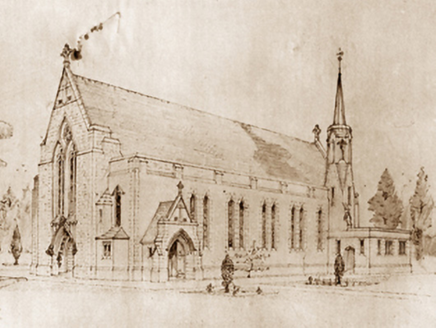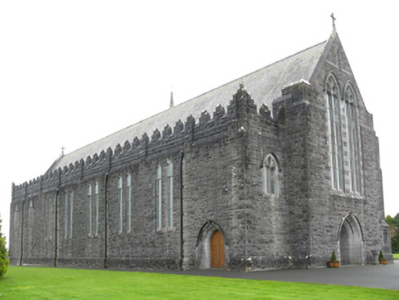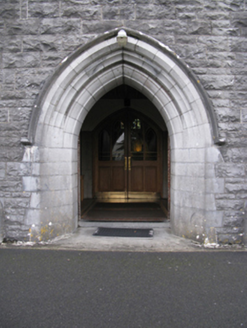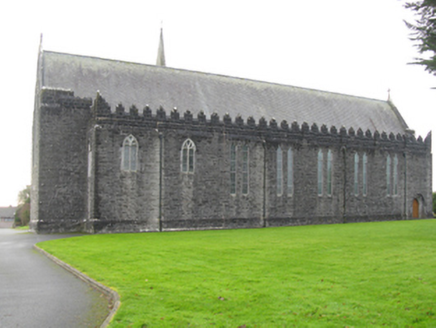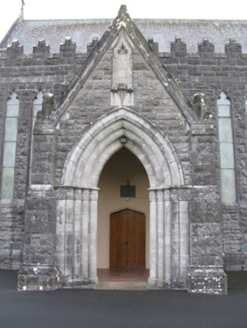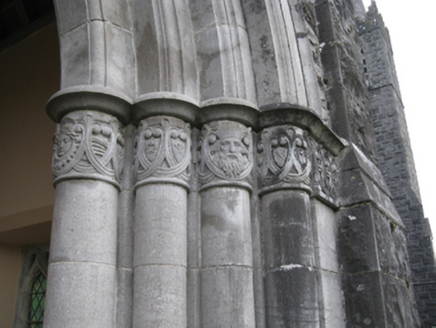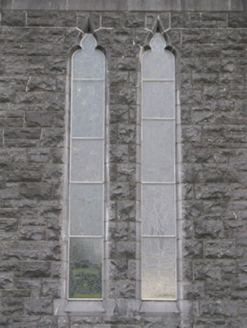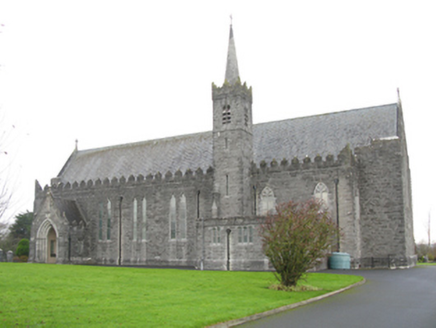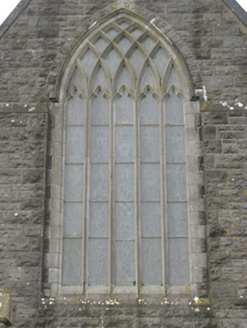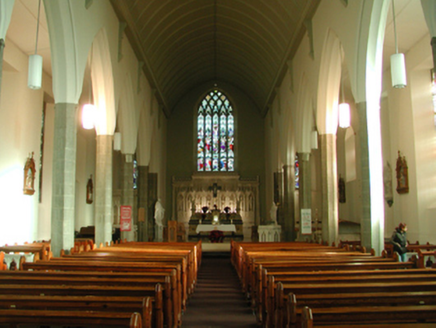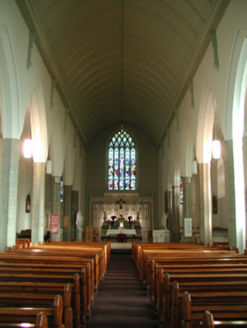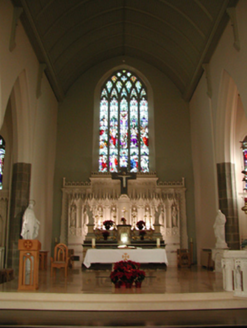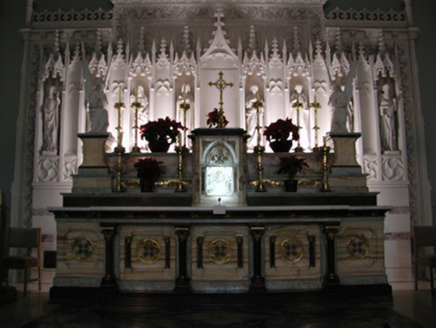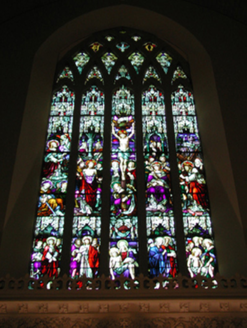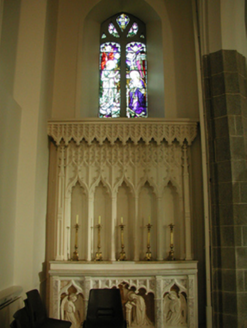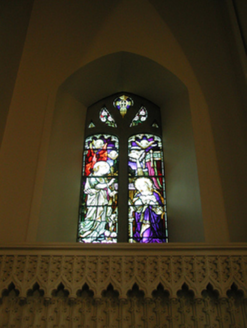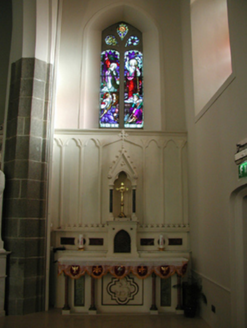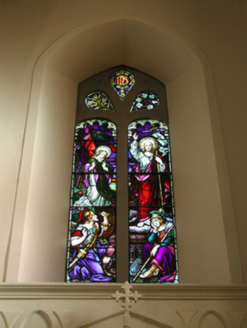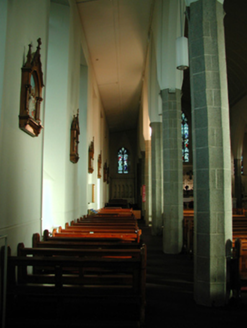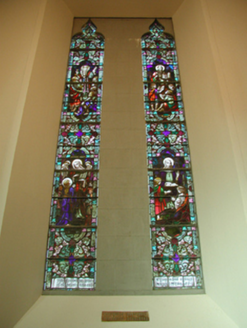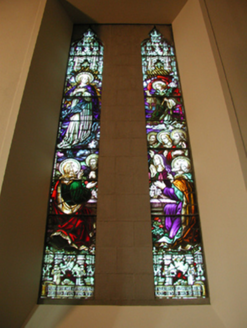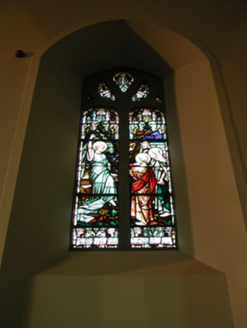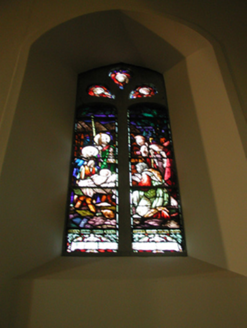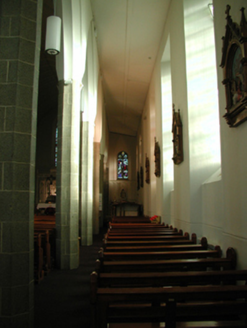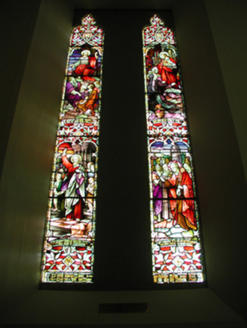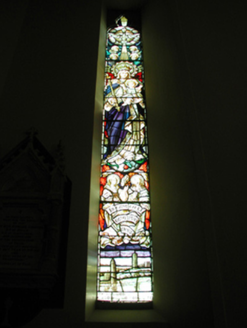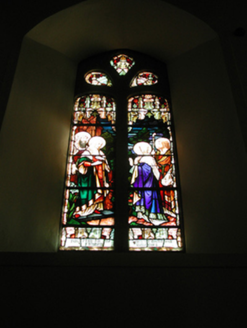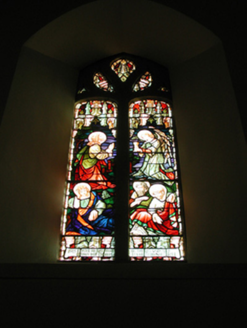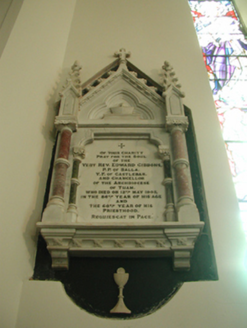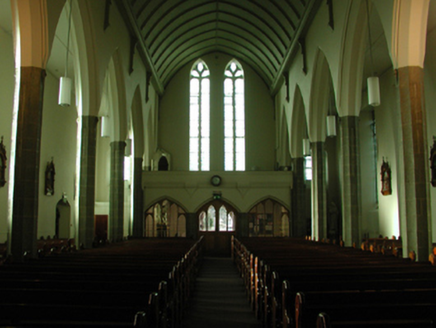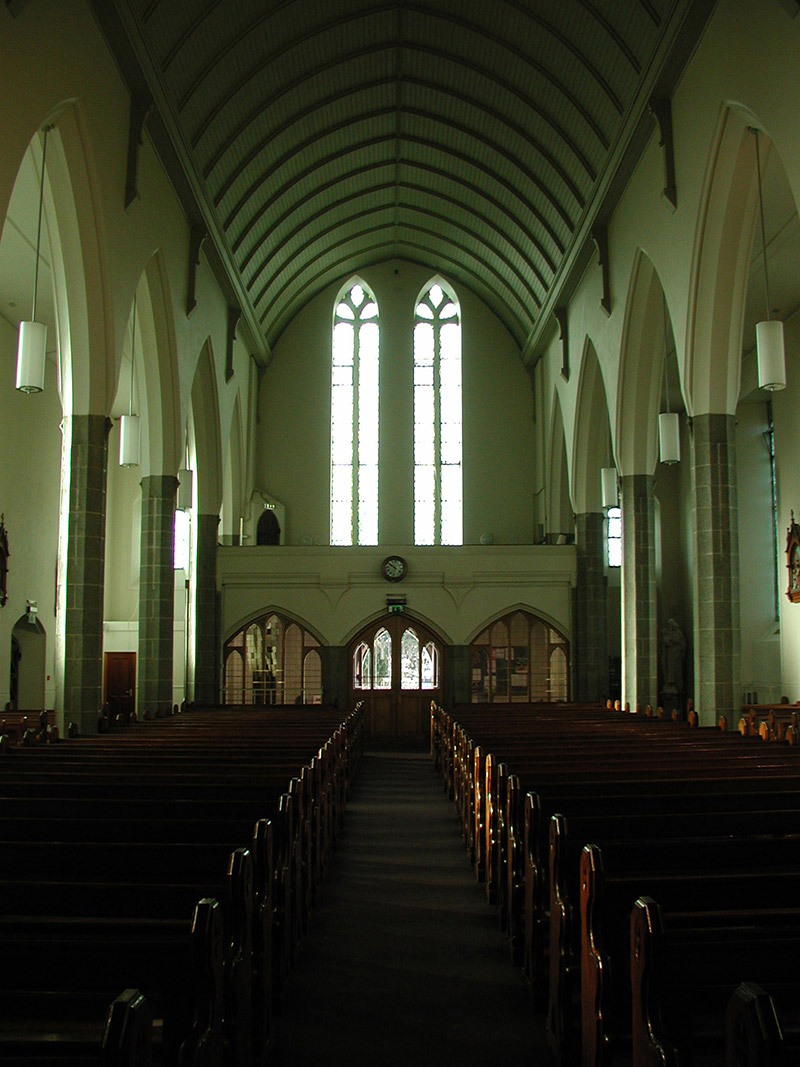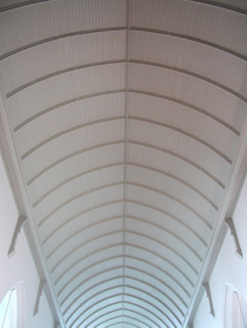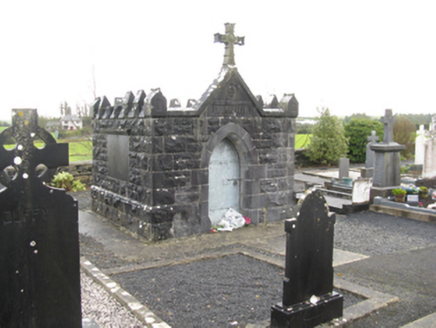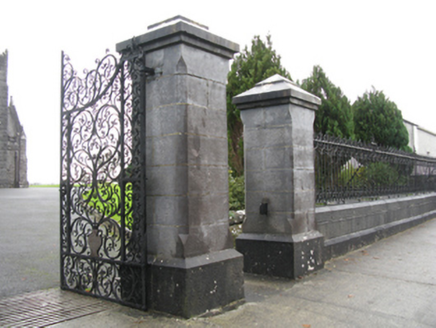Survey Data
Reg No
31309022
Rating
Regional
Categories of Special Interest
Architectural, Artistic, Historical, Social, Technical
Original Use
Church/chapel
In Use As
Church/chapel
Date
1905 - 1915
Coordinates
125644, 284115
Date Recorded
23/11/2010
Date Updated
--/--/--
Description
Detached nine-bay double-height Catholic church, designed 1906; built 1912-3, on a rectangular plan comprising nine-bay double-height nave opening into eight-bay double-height flat-roofed side aisles. Renovated, ----, with sanctuary reordered. Renovated, ----, with sanctuary "improved". Pitched Delabole slate roof abutting flat roofs behind parapets (side aisles), clay ridge tiles, lichen-covered dragged cut-limestone coping to gables with Cross finials to apexes, and concealed rainwater goods retaining rosette-embossed cast-iron hoppers and downpipes. Tuck pointed snecked rock faced limestone battered walls on lichen-covered dragged cut-limestone chamfered cushion course on plinth with Irish battlemented parapets having lichen-covered dragged cut-limestone coping. Paired cusped lancet window openings with drag edged rock faced hammered limestone block-and-start surrounds framing storm glazing over fixed-pane fittings having lattice glazing bars (west) or stained glass margins centred on leaded stained glass panels (east). Pointed-arch window opening (east) with dragged cut-limestone interlocking Y-mullions, and drag edged dragged cut-limestone block-and-start surround having chamfered reveals with hood moulding framing storm glazing over fixed-pane fittings having leaded stained glass panels. Pointed-arch door opening to entrance (west) front with dragged cut-limestone step threshold, and drag edged dragged hammered limestone block-and-start surround having splayed reveals with hood moulding framing timber boarded double doors. Paired lancet or pointed-arch window openings (gable) with dragged cut-limestone Y-mullions, and drag edged dragged cut-limestone block-and-start surrounds having chamfered reveals with hood mouldings framing storm glazing over fixed-pane fittings having stained glass margins centred on lattice glazing bars. Pointed-arch opposing door openings (west), drag edged dragged hammered limestone block-and-start surrounds having splayed reveals with hood mouldings framing timber boarded double doors. Interior including vestibule (west) with glazed terracotta tiled floor; pointed segmental-headed arcade centred on glazed timber panelled double doors; full-height interior with choir gallery (west), carpeted central aisle between cruciform-detailed timber pews, pointed-arch arcades on granite ashlar octagonal pillars, timber boarded pointed barrel vaulted ceiling with carved timber ribs on box cornice on corbels, stepped dais to sanctuary (east) reordered, ----, with Gothic-style reredos (1919) centred on quatrefoil-detailed Gothic-style memorial high altar (1918) below stained glass "East Window" (1914), stepped daises to side altars with Gothic-style altars below stained glass memorial windows (1915), and Gothic-style timber stations between stained glass memorial windows (1915-6). Set in landscaped grounds with drag edged tooled limestone ashlar chamfered piers to perimeter having lichen-covered drag edged dragged cut-limestone "slated" pyramidal capping supporting reclaimed wrought iron double gates.
Appraisal
A church erected to designs (1906) by Rudolph Maximilian Butler (1872-1943) of Dawson Street, Dublin (Irish Builder 20th October 1906, 848), representing an important component of the early twentieth-century built heritage of County Mayo with the architectural value of the composition, one evoking favourable comparisons with the Butler-designed Saint Patrick's Catholic Church (1914-8) in Newport (see 31208021), confirmed by such attributes as the rectilinear "hall" plan form, aligned along a liturgically-correct axis; the robust rock faced surface finish offset by sheer limestone dressings not only demonstrating good quality workmanship, but also compounding a ponderous two-tone palette; the slender profile of the coupled openings underpinning a "medieval" Gothic theme with the chancel defined by a cusped "East Window"; and the needle spire embellishing the high pitched roof as a picturesque eye-catcher in the landscape. Having been well maintained, the elementary form and massing survive intact together with substantial quantities of the original fabric, both to the exterior and to the arcaded interior reordered (----) in accordance with the liturgical reforms sanctioned by the Second Ecumenical Council of the Vatican (1962-5) where contemporary joinery; vibrant stained glass signed by George Daniels (1854-1940) of Daniels and Fricker (fl. 1920-7) of London and Joshua Clarke and Sons (established 1892) of Dublin; a polychromatic high altar (1918); a reredos (1919) by Albert George Power (1881-1945) of Dublin (Irish Builder 3rd May 1919, 205); and the jewel-like "East Window" (1914) attributed to Franz Mayer and Company (established 1847) of Munich and London (Bowe 1989, 38), all highlight the considerable artistic potential of the composition: meanwhile, a pointed barrel vault pinpoints the engineering or technical dexterity of a church making an imposing visual statement in a rural village street scene.
